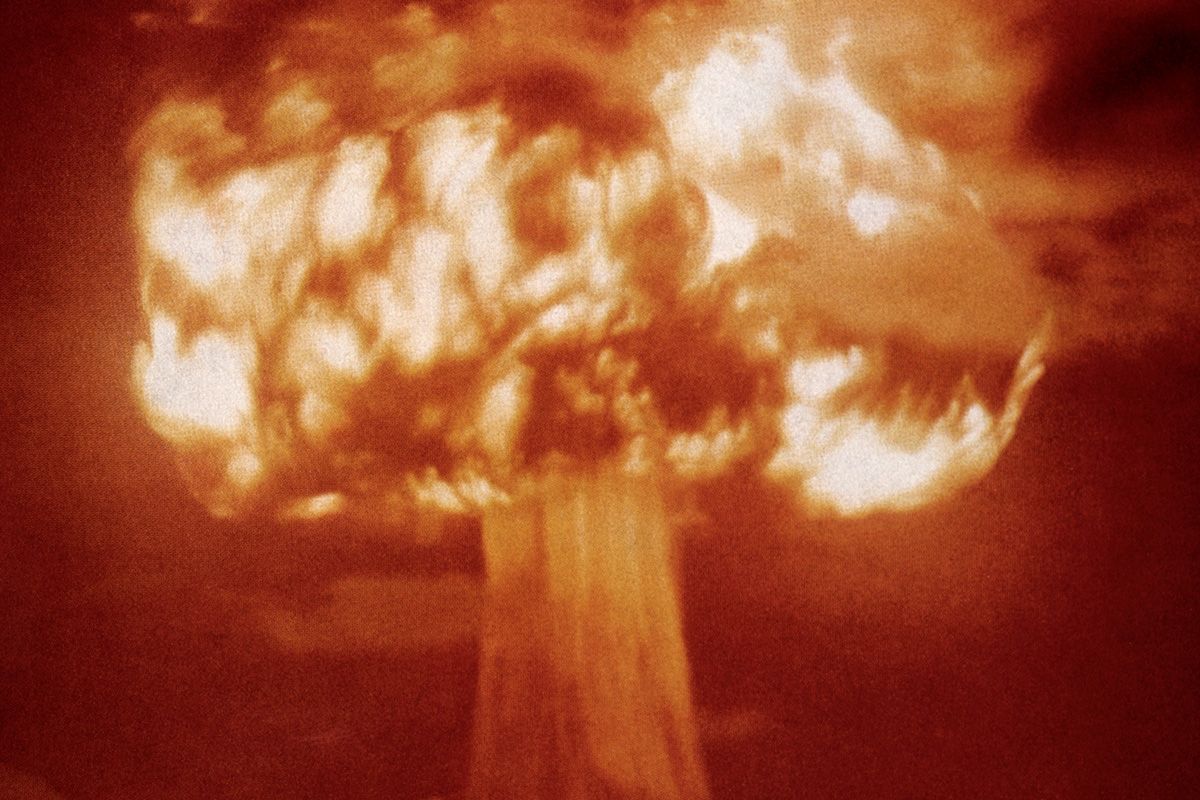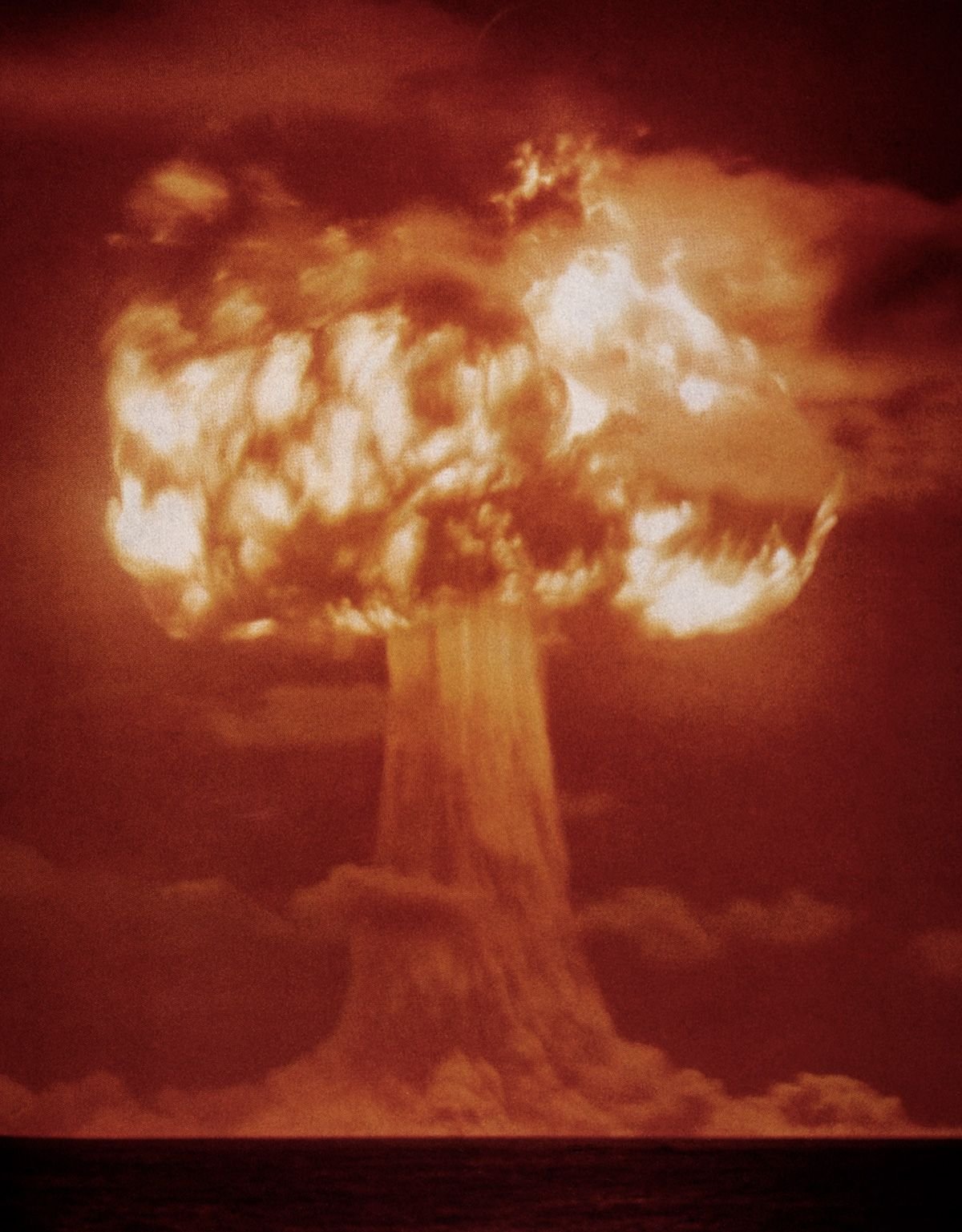
In the last two years of nuclear negotiations between the United States and North Korea, we have grown accustomed to the idea that the men who wield the world's nuclear weapons might not be entirely predictable or even rational—a state of affairs very much in fitting with the messy history of nuclear development.
From the beginning, nuclear technology has been an extraordinarily unpredictable science. Our first foray into nuclear power—the Trinity Test, in the Jornada del Muerto desert near Alamogordo—was riddled with inaccurate measurements and conflicting predictions.
For one thing, nobody seemed quite sure how to accommodate the facts of the weather. The day before the test, some of the scientists believed it should be postponed on account of the thunderheads that had begun to roll over the Oscura range: If the radioactive cloud drifted into a rainstorm, these scientists believed, fallout on local ranches and towns—as well as the test site itself—would be more condensed and dangerous.
The General in charge of the experiment disagreed: Time was ticking on the war in Japan. Teams of meteorologists were called in; smoke experiments were conducted; flocks of brightly-colored weather balloons were released and observed as they drifted over the Oscura range. Ultimately, the meteorologists predicted that the clouds would clear, so the test was confirmed for the early hours of the morning, and yet it rained all night, lightning striking the desert in every direction of the 100-foot steel tower on which the world's first atom bomb had been erected.
Around midnight, Robert Oppenheimer, the scientist in charge of the experiment, began to fear that the heavy rain might damage some of the electrical circuits on the tower, so he sent a scientist to climb the shot tower and huddle beside the bomb, nestled into a nest of wet cables and ropes and pulleys, where he tried to read Desert Island Decameron, a collection of humorous essays, but found himself counting seconds between lightning flashes and thunder, trying to measure the distance between the tower and the lightning strikes.
Around 2:00 a.m., rain was still pelting the camp and the test was pushed back; at 2:30 a.m. it was pushed back again. To pass the tense, rainy hours, Enrico Fermi (who created the world's first nuclear reactor) and some of his friends took bets on the yield of the bomb. Some believed it wouldn't go off at all; others wagered on how long it would take for the entire earth to catch flame if a chain reaction were triggered by the atmosphere.
Such was the range of possible outcomes that various scientists on the test believed likely. Meanwhile, at their posts throughout the desert, the scientists on evacuation duty—in case fallout spread to nearby ranches and towns—held handmade maps of the region that had already proven to be entirely unreliable, depicting roads that no longer existed, or that were now divided by mines.
And then, finally, at 4:00 a.m., the rain cleared, and the scientists and engineers were able to proceed with the world's first nuclear test. And the test was a success, in that the bomb exploded as planned—but its yield far surpassed any of the scientist's expectations, as did the fallout.
Though the rain had cleared, winds carried the fallout faster and farther than the scientists had hoped. The radioactive cloud reportedly drifted northeast at about 10 mph, dropping a white, radioactive mist over the cattle ranches nearby. It set off Geiger counters in Carrizozo, New Mexico; fallout was detected over a hundred miles away in Vaughn, New Mexico, and at several points farther away.
Later, Kodak executives discovered that, as a result of the Trinity Test, rolls of film had been damaged by nuclear fallout in a river in Indiana, near the factory where their cardboard film containers had been produced. No one had predicted that radioactive fallout would spread as far as Illinois. For a community scientifically and technologically advanced enough to create an atom bomb—to harness the power of the stars—their technologies for predicting the environmental and human health effects of the test were strangely lacking.

The test went off, but with none of the exactitude we like to attribute to science.
The same could be said of later nuclear tests, as well, like the Castle Bravo test on the Bikini Atolls, which yielded fifteen megatons, far more than the predicted four to eight megatons, and caused environmental and human health catastrophes that persist to this day.
Still, it should be said that the unpredictability of nuclear tests was taken into account in at least one productive way, in that—after the film damage caused by the Trinity Test—the photography industry was warned in advance of future tests.
Other industries—like the milk industry, for instance—were not warned, and nor were consumers. It was later discovered that in the years after early nuclear bomb tests, a "milk pathway" had exposed infants and children to dangerously high levels of radiation from the milk of cows exposed to radiation "hot spots," or locations where radioactive rain had fallen in the days after a test. Which, of course, was just what the scientists at the Trinity Test had feared—though they hadn't taken into account the fact this could result from a test even if it weren't raining at the actual site.
Even now, all these years later, we still lack any clear measurements of the environmental and health effects of the Trinity Test.
The National Cancer Institute only commenced an effort to measure the effects of fallout on the area of the Trinity Test in 2015, and it will be years before they have any results. The science of nuclear testing isn't only the science of nuclear reactions: It's the science of predicting yields, weather patterns, nutritional chains, waste cleanup, cancer treatment.
And from the beginning of our nuclear history, our technologies for producing explosions have always far outstripped our technologies for measuring and ameliorating the damage those explosions will produce.
Louisa Hall is an American novelist and poet. She is the author of the book Trinity which has been longlisted for the Swansea University International Dylan Thomas Prize, which is available in hardback now and published in paperback on April 4.
Views expressed in this article are the author's own.
Uncommon Knowledge
Newsweek is committed to challenging conventional wisdom and finding connections in the search for common ground.
Newsweek is committed to challenging conventional wisdom and finding connections in the search for common ground.
About the writer
To read how Newsweek uses AI as a newsroom tool, Click here.








